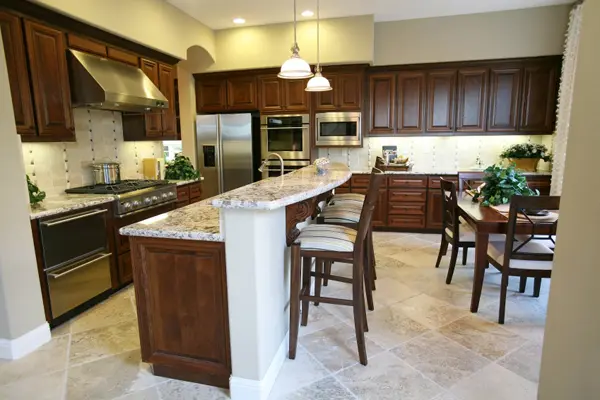
Common Types Of Granite Countertops Damage
- Posted on
- FlintstoneCountertops
Like any other countertop material, granite countertops suffer different forms of damage. Some are simple, and you can easily fix them on your own while others are complex, and you have to ask a professional to take a look at them. In some cases the damage is so extensive you have to replace the entire countertop slab.
Some of the damage your countertops can have include:
Separating seam joints
This happens when the adhesive is falling apart. If the seams are coming apart several years after installation, it could be due to old age, but if you recently installed the countertops and they are coming apart, it might be due to improper installation.
Seams come apart if they are too large, the contractor used the wrong epoxy, or the contractor didn’t put enough work into them.
To fix the problem, you need to contact a reputable professional and ask them to inspect the countertops and find out what they can do to fix the problem.
Chips along the countertop edges
Countertops will develop chips along the edges, especially where most of the cooking happens. The chips come about due to constant contact of the cooking utensils with the countertops.
To fix this issue, ask a professional store technician to inspect the chipped surfaces carefully. The contractor should then prepare the area and apply a color matching epoxy material. An experienced professional won’t have a problem fixing the area and hiding the etched surfaces.
Dullness around the sink
It’s normal for countertops to dull around the sink area due to the activities that take place there. Since the surfaces are in constant contact with water and exposed to cutting activities, granite tends to dull and even wear and tear out fast.
Luckily, you can restore the dullness with a diamond refinishing system. Ask a professional technician to help you out, and you will restore your countertops to as good as new.
Cracks
Cracks completely spoil the aesthetic appeal of the house. Luckily, if the cracks are small, you can fix them, but if they are large, you have no way out other than to replace the entire countertop slab.
Cracks on the countertops come about due to plenty of reasons that include:
- Poorly glued joints
- Installation of the countertops on uneven surfaces
- Failing to give glue enough time to settle
- Putting a lot of weight at the center of the countertop
If the cracks are small, you can easily fix them with adhesives; however, if they are deeper, you may have to remove the damaged portion, then replace it with a better one. Countertop installers sometimes use special fillers when they feel the cracks aren’t too large to warrant replacement.
When choosing filler, choose one that sticks effectively to your countertops.
Staining
You will have your countertops staining around stoves and cooktops. If you haven’t sealed your counters, the surfaces will absorb oil-based stains and darken. To restore your countertops to their former glory, you need to use Poultice.
Apply the material on the stained area and cover it with a plastic seal. Over time, the solution will dry and turn to powder that will absorb the oil stain. If you find the stain isn’t going away, you can reapply Poultice as many times as you want until all the stains are gone.
Water damage
They say water is life, but did you know it can be deadly to your countertops? The effect is worse if you have a small kitchen. If you haven’t sealed your countertops, water will get to the inner layers and stain your surfaces
Luckily, in most cases, the stain goes away when water evaporates. If water was stained (such as in juice), you have to ask a professional technician to help you out.
High-temperature effect
Granite counters are known for their toughness and ability to withstand high temperatures; however, when you introduce extremely high temperatures at once, the counters are bound to get damaged.
For example, when you carelessly place a hot pan (straight from a flame), directly on the surfaces, you will damage the countertops. Granite companies Potomac recommend you try salvaging the ugly spots using toothpaste. If this doesn’t remove the spots, replace the countertops.

